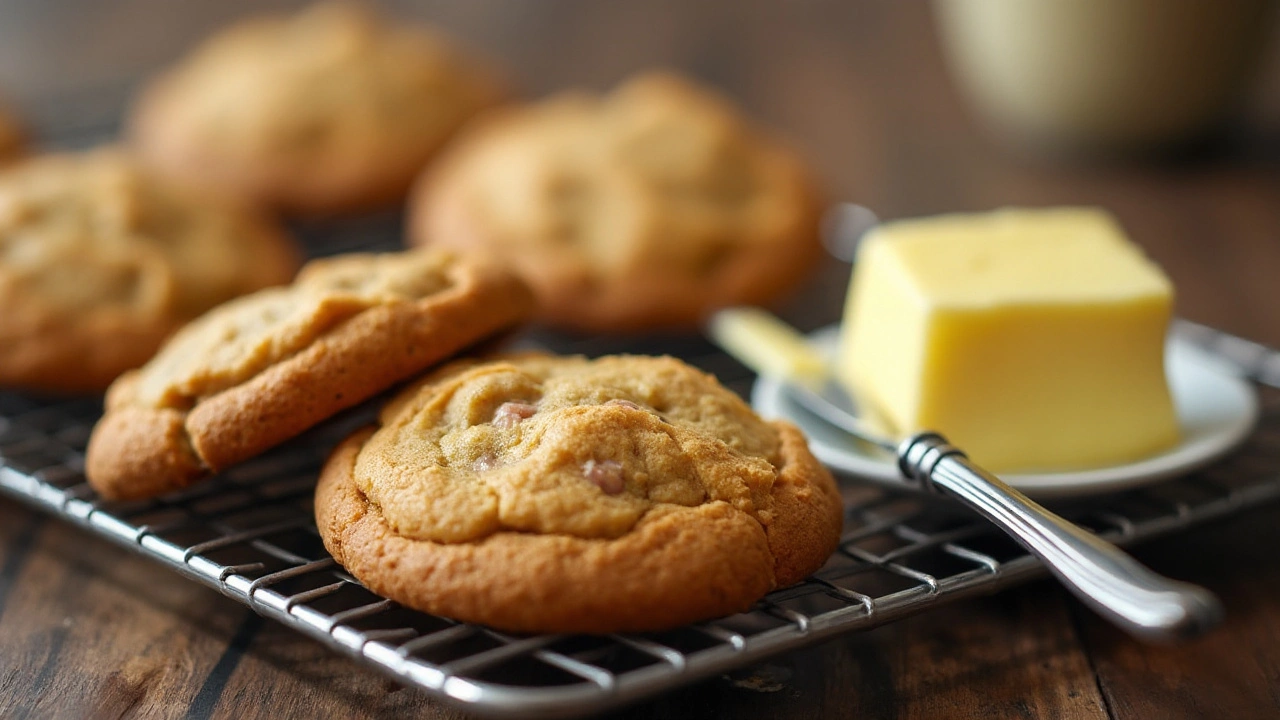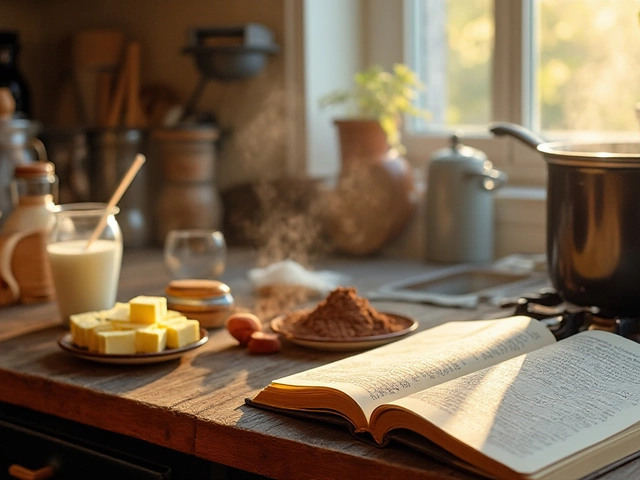Butter in Cookies – What It Does and How to Use It Right
Butter is the secret behind that melt‑in‑your‑mouth feel most people love in a cookie. It adds flavor, helps spread, and creates a tender crumb. But not every butter works the same, and the amount you use can flip the cookie from chewy to cakey in a snap. Below are the basics you need to get consistent, buttery cookies every time.
How Butter Changes Cookie Texture
When you cream butter with sugar, you trap air. Those air bubbles lift the dough, giving you a softer, puffier bite. If you melt the butter instead, the dough spreads more and you end up with a thin, crisp edge. The fat itself also coats flour particles, stopping gluten from forming too much, which keeps the cookie tender.
Three key things to watch:
- Amount – More butter means more spread and a richer flavor, but too much can make the cookie greasy.
- Temperature – Softened butter (room temp) is perfect for creaming. Cold butter should be cut into the flour for a crumbly, shortbread‑like texture.
- Type – Salted butter adds a subtle salty pop. Unsalted gives you control over the salt level. European‑style butter has higher fat, yielding a richer crumb.
Tips for Using Butter Right
1. Measure accurately. Spoon butter into a measuring cup and level it off – packing it in can add unwanted calories and change the spread.
2. Don’t over‑mix. Once the flour joins the butter‑sugar mix, stop mixing. Over‑mixing creates more gluten, turning a soft cookie into a tough one.
3. Adjust for altitude. At higher elevations, butter spreads faster. Chill the dough for 30 minutes before baking to keep shape.
4. Try the melt‑and‑mix method. Melt butter, let it cool a bit, then combine with dry ingredients. This gives a chewy center and crispy edges – great for oatmeal or chocolate chip cookies.
5. Swap wisely. If you run out of butter, use half the amount of shortening plus half the amount of butter for flavor. Coconut oil works in vegan recipes but adds a faint coconut taste.
6. Season smartly. A pinch of sea salt on top before baking amplifies the buttery flavor and balances sweetness.
7. Chill the dough. Even a short 15‑minute chill firms up the butter, reduces spreading, and improves the cookie’s structure.
8. Watch the bake. Butter continues to melt as the cookie cools. For a soft center, remove from the oven when the edges are just set. For crispier cookies, let them bake a minute longer.
Putting these tips together will help you understand why a tiny change in butter can flip the whole cookie experience. Experiment with room‑temp versus melted butter, or try a mix of both, and note how the texture changes. The more you play, the better you’ll know what each recipe needs.
Bottom line: butter isn’t just a fat – it’s the flavor engine and texture ruler in cookies. Treat it right, measure it right, and you’ll bake buttery, crowd‑pleasing cookies every time.

The Role of Butter in Perfecting Homemade Cookies
Butter is a crucial ingredient in cookies, influencing both texture and flavor. This article explores how butter impacts cookies, from its chemical reactions during baking to tips on choosing the best type of butter for your recipes. It breaks down the science behind butter's role and offers practical advice on achieving your preferred cookie texture by adjusting how and when you incorporate butter. Whether you're a seasoned baker or new to the kitchen, discover how this humble ingredient can elevate your homemade cookie game.
View More




